Ready to take flight in your career but have a few questions?
Here are some frequently asked questions about becoming a Bird Removal Technician at Meridian!

What bird species do BRTs typically capture?
Our Bird Removal Technicians (BRTs) primarily capture house sparrows, European starlings, and rock pigeons. However, the scope of captured species can include a diverse range of native birds, such as songbirds and occasional raptors.

How far does a BRT normally drive to each job?
The average travel distance varies depending on the region. BRTs located in densely populated areas of the Northeast tend to have shorter commutes, while those in the Midwest and Western states may experience longer travel distances. In the Western regions, BRTs with a willingness to travel up to 400 miles (one-way) often find the greatest opportunities for professional development and advancement.

Are there travel opportunities for BRTs?
Absolutely! We encourage our BRTs to pursue the necessary licenses to expand their service offerings into additional states. As our operational footprint continues to grow, BRTs with increased experience will have access to a wider range of travel opportunities.

Are BRTs reimbursed for fuel?
Yes, Meridian reimburses BRTs for fuel costs at a rate of 35 cents per mile in most regions. Certain regions offer a higher reimbursement rate. This reimbursement covers both travel to and from the BRT's residence and the job site.

What is required to be promoted to the next BRT level?
There are several levels of Bird Removal Technicians. Promotions are primarily based on experience. On average, Trainees can achieve the highest BRT level within a year and a half. However, this timeframe can be influenced by an individual's availability and geographic location. BRTs who demonstrate a willingness to travel often experience more opportunities for capture and faster career progression.

What do BRTs do when they are not assigned jobs?
Even on days when a BRT is scheduled to be available but has not yet received a specific job assignment, they remain on standby for potential same-day dispatch. The standby period varies by region, with some BRTs being on call until 2:00 pm and others until 11:00 am. Once the designated standby period ends without a same-day dispatch, the BRT is free for the remainder of the day, unless assigned other off-site tasks.

What is included in the uniform?
Meridian provides BRTs with two polo shirts and a company hat. BRTs are responsible for providing their own khaki pants, closed-toe shoes, and a neutral-colored undershirt (optional). Facial piercings must be removed, and all tattoos must be covered while on job sites.

Can BRT work provide a full-time income?
Many technicians initially joined our team on a part-time basis. Career advancement to BRT 3, Trainer positions, or positions with other departments can offer increased job opportunities and the potential for full-time work. However, due to the seasonal and unpredictable nature of our workflow, we strongly advise part-time BRTs to maintain a supplemental source of income. Bird removal work cannot be solely relied upon for financial stability.

How many job assignments can a BRT expect?
The unpredictable nature of our service requests makes it difficult to guarantee a specific number of assignments. Three days of availability does not necessarily guarantee three job assignments. Some weeks may result in zero jobs whereas other weeks may result in multiple jobs, including two or more jobs in a single day. Full-time technicians are asked to provide five days of availability. The seasonality of our work also plays a big role in determining how many jobs are available, with the winter and spring months being our busiest seasons.
